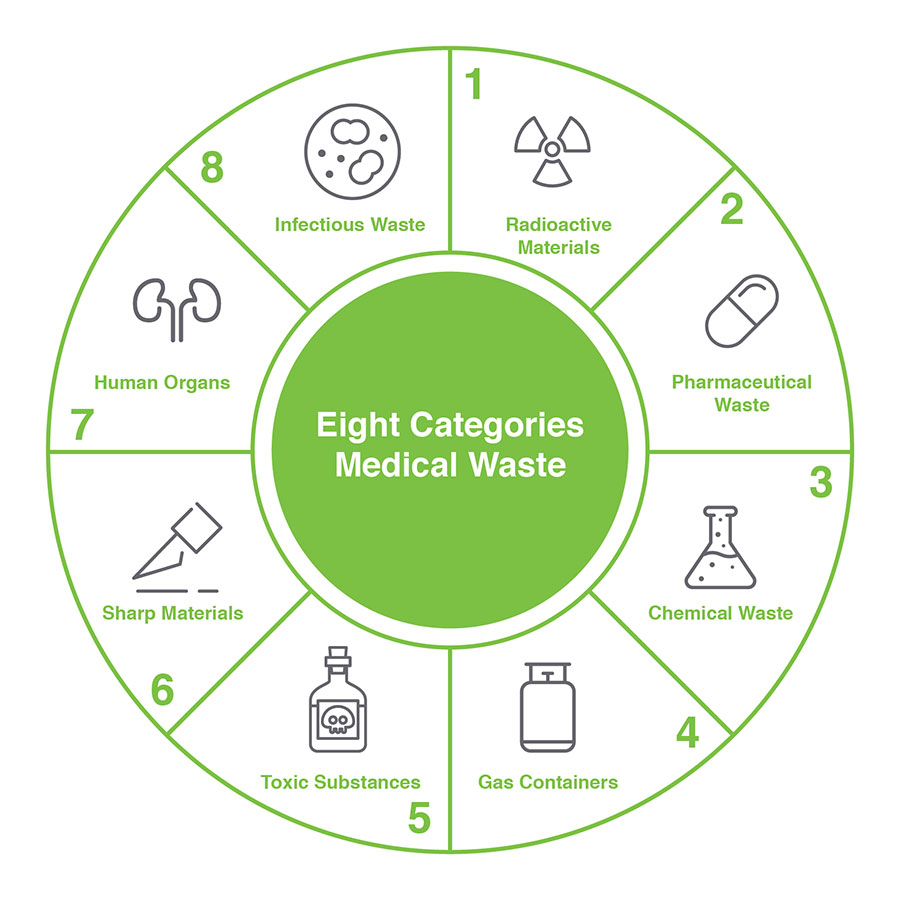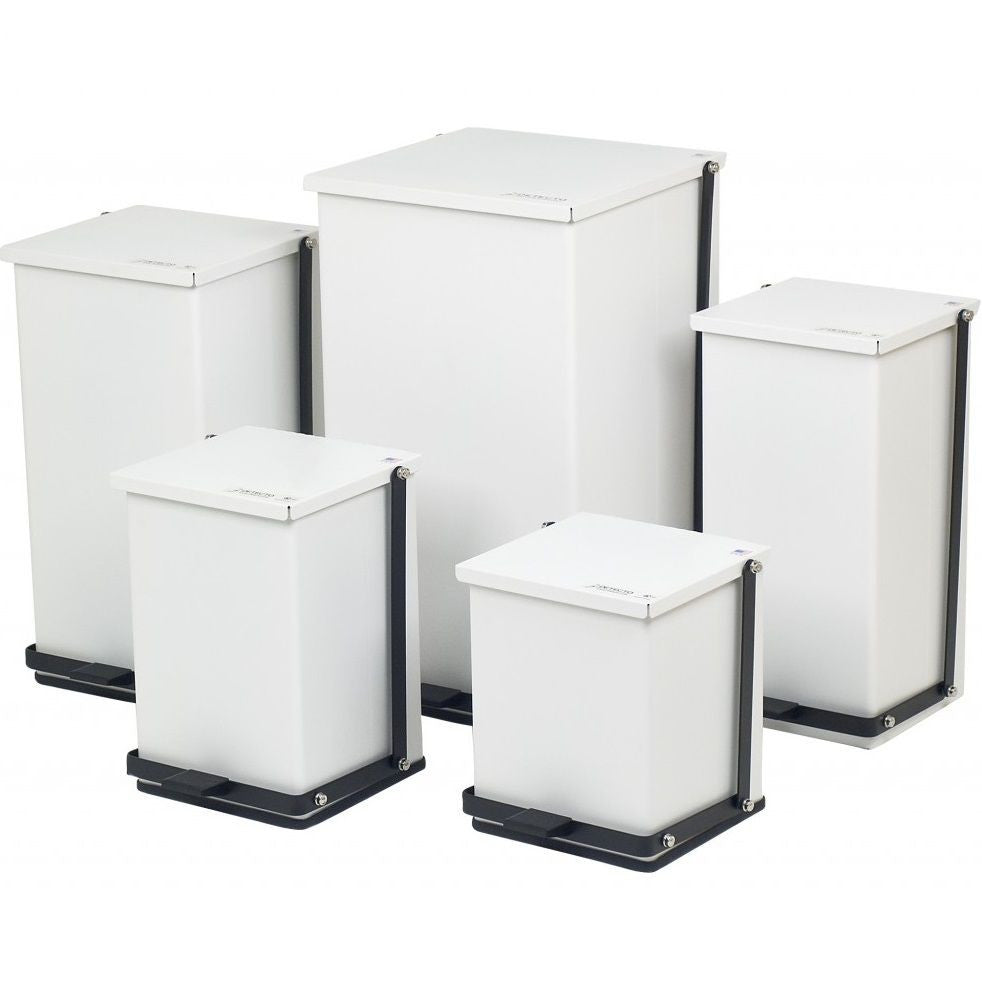Safety First: Your Guide to Liable Medical Waste Removal Services
Wiki Article
Reliable and Ecologically Friendly Medical Waste Disposal Solutions
In the ever-evolving area of medical care, the problem of medical waste disposal remains a topic of extremely important importance. As health centers, centers, and other healthcare centers aim to supply top quality person treatment, they must additionally resolve the challenge of effectively and responsibly disposing of their waste.Waste Partition Practices
Reliable waste segregation practices are vital to ensure the appropriate and safe disposal of medical waste. Medical waste, which consists of products polluted with potentially transmittable materials, should be taken care of in a method that decreases the threat of harm to both public health and the setting. Appropriate waste segregation plays a crucial function in attaining this goal.Waste segregation includes the separation of various types of waste based on their attributes and possible risks. This procedure guarantees that each kind of waste is treated and gotten rid of appropriately (medical waste disposal services with WasteX). It starts at the factor of generation, where health care facilities need to have marked bins and containers for various waste groups, such as sharps, transmittable waste, pharmaceutical waste, and non-hazardous waste
By segregating medical waste at the source, doctor can avoid cross-contamination and reduce the threat of exposure to transmittable agents. This method additionally promotes the recycling and healing of particular products. As an example, segregating and reusing tidy plastics and glass lowers the need for basic materials and minimizes the environmental effect of medical garbage disposal.

Autoclaving and Sterilization Techniques
In order to make sure the secure and correct disposal of clinical waste following reliable waste partition practices, health care facilities should utilize autoclaving and sanitation strategies. Autoclaving is a commonly used technique that uses high-pressure heavy steam to sterilize clinical waste.One more commonly utilized sterilization strategy is chemical sterilization. This involves treating the waste with chemicals such as ethylene oxide or hydrogen peroxide, which kill bacteria by disrupting their cellular structure. Chemical sanitation is usually used for heat-sensitive things or products that can not stand up to the heats of autoclaving. It is crucial to keep in mind that chemical sterilization requires correct handling and disposal of the chemicals made use of, as they can be dangerous to human health and the environment if not managed correctly.
On-Site Waste Therapy Systems
Medical care centers have actually implemented on-site waste treatment systems to address the disposal of clinical waste in a effective and risk-free way. These systems give a affordable and convenient solution for managing medical waste created within the facility. On-site waste therapy systems make use of numerous technologies to treat and dispose of clinical waste on-site, lessening the requirement for transport to off-site centers.One generally utilized on-site waste therapy system is the microwave modern technology. This technology uses microwave power to disinfect and decontaminate clinical waste, reducing its volume and rendering it risk-free for disposal. An additional system is the chemical disinfection modern technology, which entails treating medical waste with chemicals to kill pathogens and reduce its dangerous nature. This method is hop over to here specifically reliable for liquid clinical waste.
On-site waste therapy systems offer a number of benefits. To start with, they remove the risk of clinical waste being mishandled throughout transportation, lowering the possibility for contamination and direct exposure to unsafe materials. In addition, these systems help healthcare facilities abide with waste administration laws by providing a hassle-free and efficient disposal approach. On-site treatment systems reduce the overall ecological influence of medical waste by lessening transport and the demand for garbage dump room.
Recycling and Repurposing Efforts
As medical care centers pursue lasting waste monitoring techniques, they are significantly exploring recycling and repurposing initiatives as a way of reducing the environmental influence of medical waste. Recycling and repurposing efforts involve finding ingenious ways to recycle or change clinical waste right into new products or materials. This not just helps to decrease the quantity of waste that winds up in garbage dumps or burners yet likewise lowers the intake of resources and power required for making brand-new items.
One example of reusing in the health care market is the reprocessing of single-use clinical gadgets. This not only decreases the amount of waste created yet additionally saves health care centers significant prices associated with acquiring new gadgets.
One more recycling initiative involves the recycling of plastic containers, such as drug containers or why not try these out syringe housings. These containers can be gathered, sorted, and sent to reusing facilities where they are processed, melted down, and transformed into brand-new plastic items. This aids to preserve resources and reduce the need for virgin plastic production.
Along with recycling, repurposing efforts include locating alternate uses for medical waste. As an example, shredded paper waste from clinical records or packaging materials can be repurposed as bed linen material for animals or as insulation material (medical waste removal). Organic waste such as food scraps from healthcare facilities can be composted and utilized as plant food in gardens or farming areas.

Renewable Power Solutions
One effective strategy to mitigating the environmental influence of healthcare operations entails implementing eco-friendly energy solutions. Medical care facilities, such as facilities and hospitals, eat substantial quantities of power for various objectives, including lights, heating, cooling, and operating clinical devices. By transitioning to renewable resource sources, these facilities can substantially reduce their carbon footprint and contribute to a more sustainable future.

Carrying out eco-friendly power services in health care facilities not just lowers greenhouse gas discharges yet additionally offers long-lasting expense savings. While the first financial investment in renewable resource facilities might be greater, the long-term functional prices of renewable resource systems are considerably reduced compared to traditional fossil fuel-based energy resources. Furthermore, renewable resource systems are trusted and can provide a stable and uninterrupted power supply, making certain continuous healthcare services even during power blackouts or emergencies.
Verdict
In verdict, applying environmentally friendly and efficient medical waste disposal remedies is crucial for maintaining a sustainable medical care system. By adopting waste segregation practices, autoclaving and sterilization strategies, on-site waste therapy systems, reusing and repurposing initiatives, and sustainable energy solutions, health care centers can substantially reduce their ecological influence.It begins at the factor of generation, where health care centers must have marked containers and containers for various waste groups, such as sharps, infectious waste, pharmaceutical waste, and non-hazardous waste.
In order to ensure the proper and risk-free disposal of medical waste following efficient waste partition techniques, healthcare facilities must utilize autoclaving and sterilization strategies.Healthcare facilities have carried out on-site waste treatment systems to attend to the disposal of clinical waste in a reliable and secure fashion. On-site More Help waste treatment systems utilize various technologies to dispose and deal with of clinical waste on-site, lessening the demand for transportation to off-site facilities.
As health care facilities aim for sustainable waste administration techniques, they are progressively discovering recycling and repurposing campaigns as a way of minimizing the environmental influence of clinical waste. - medical waste removal
Report this wiki page